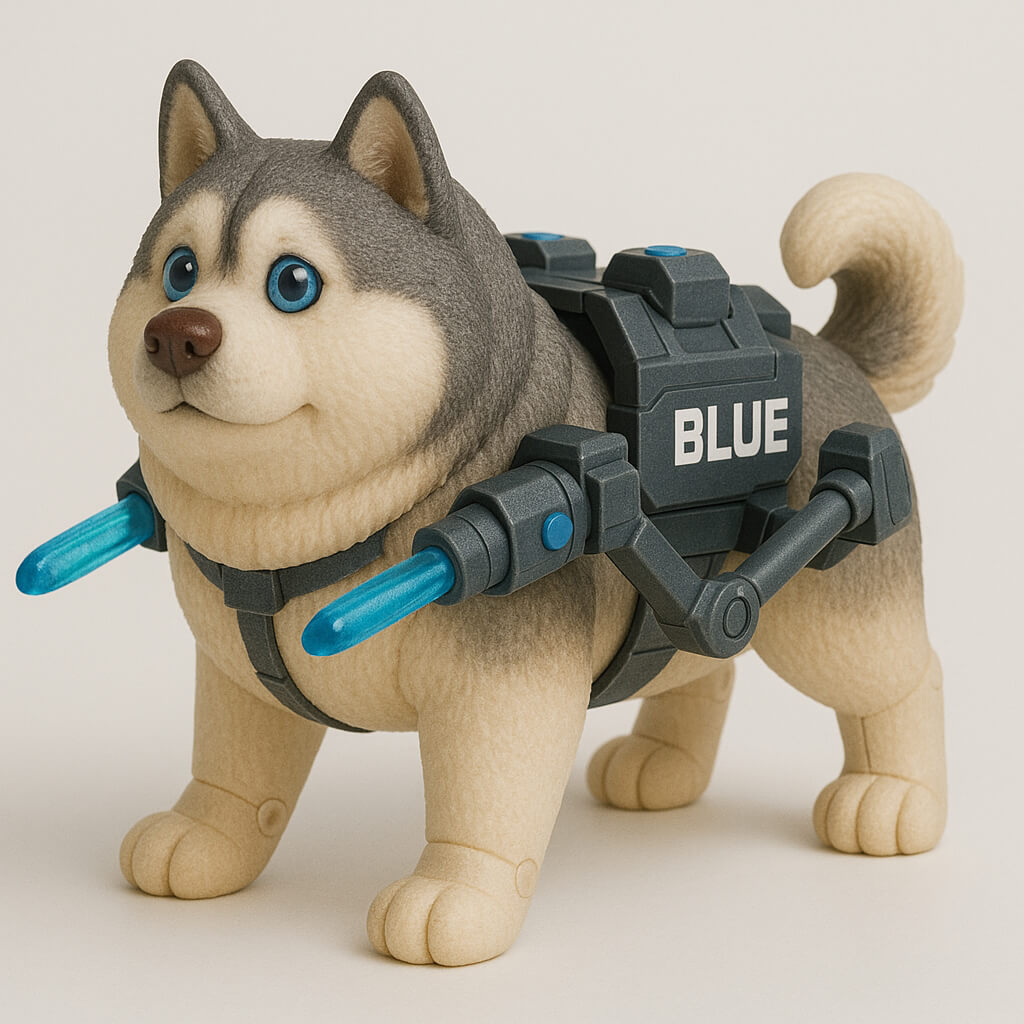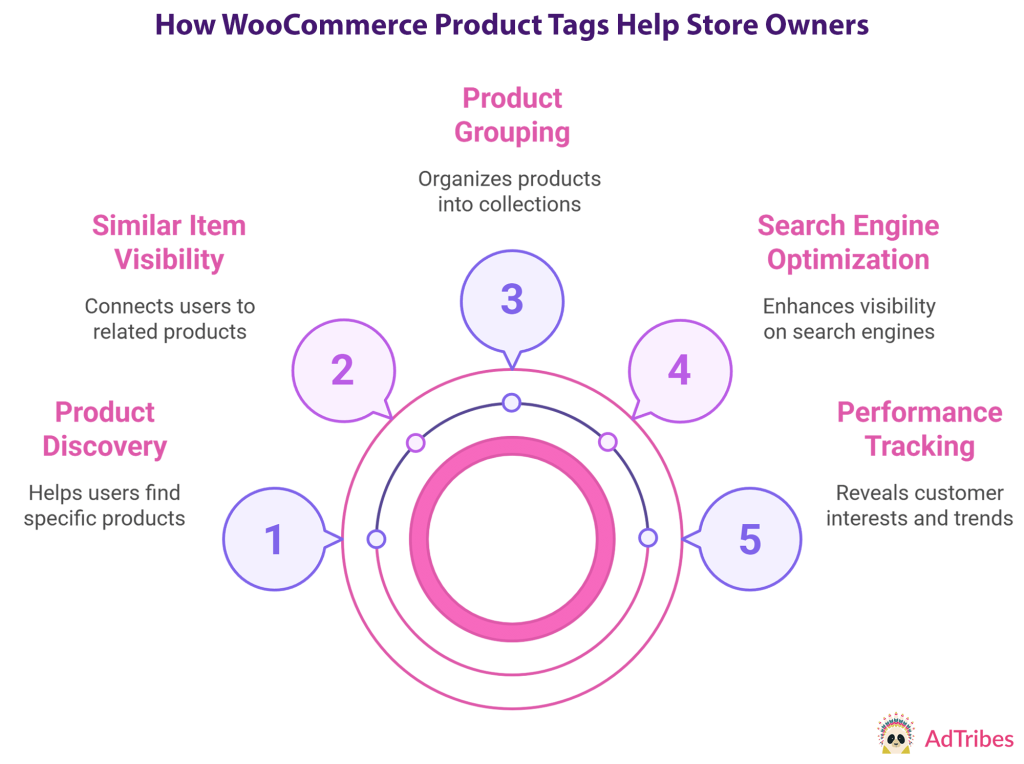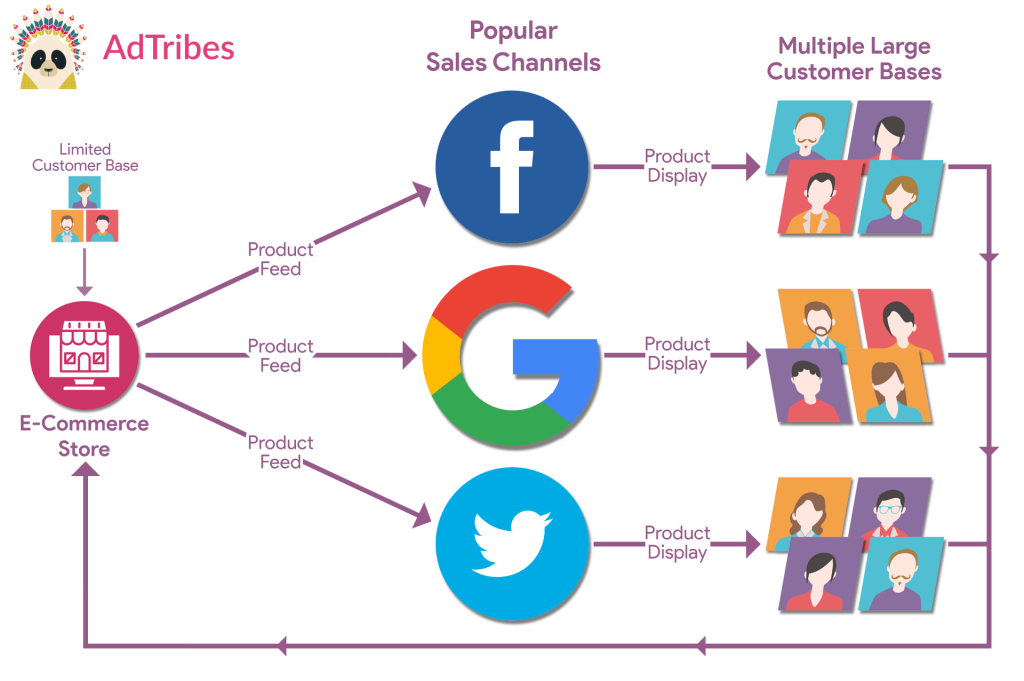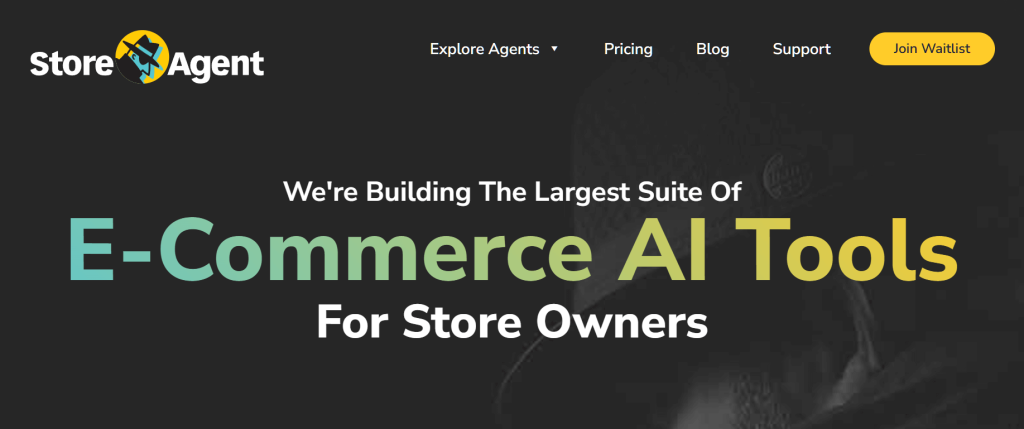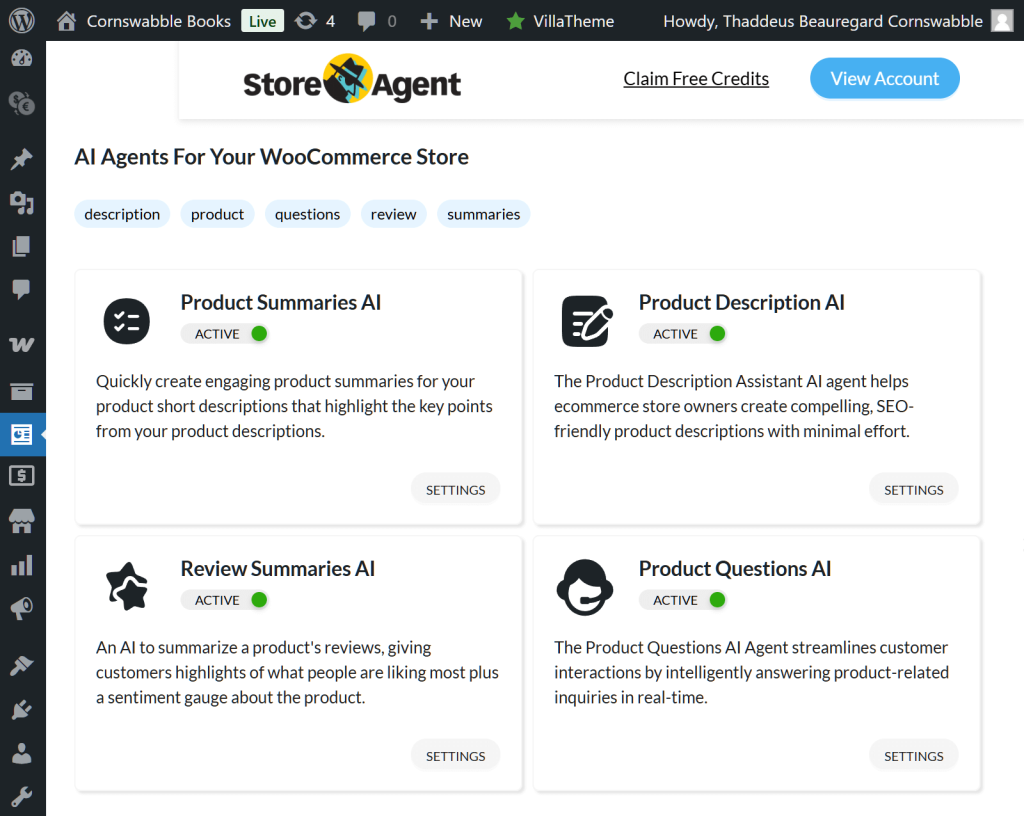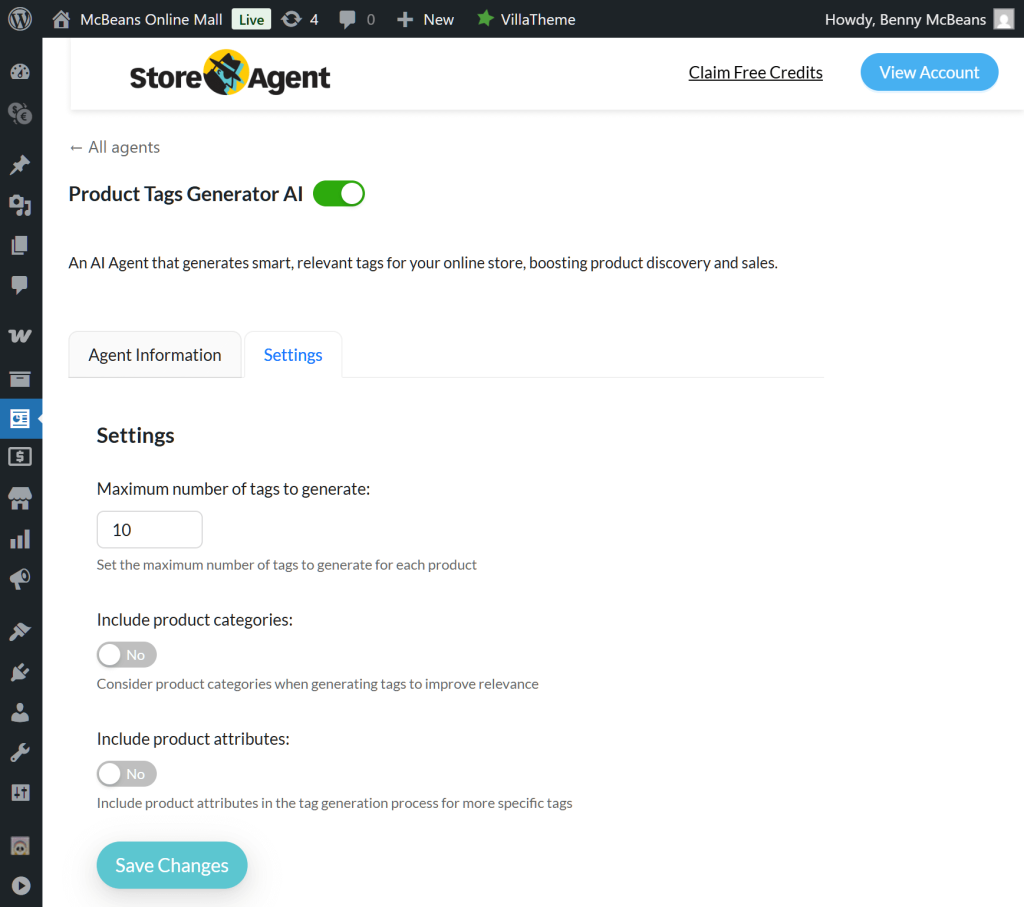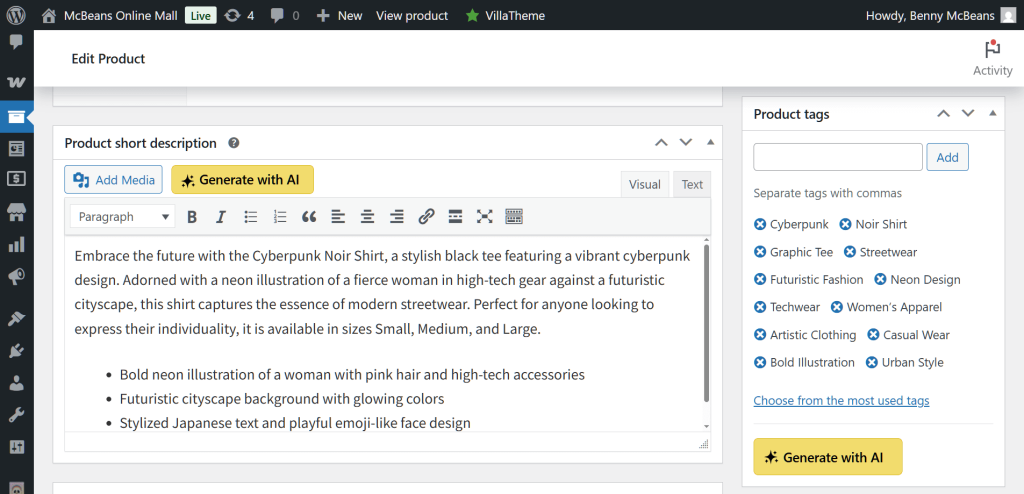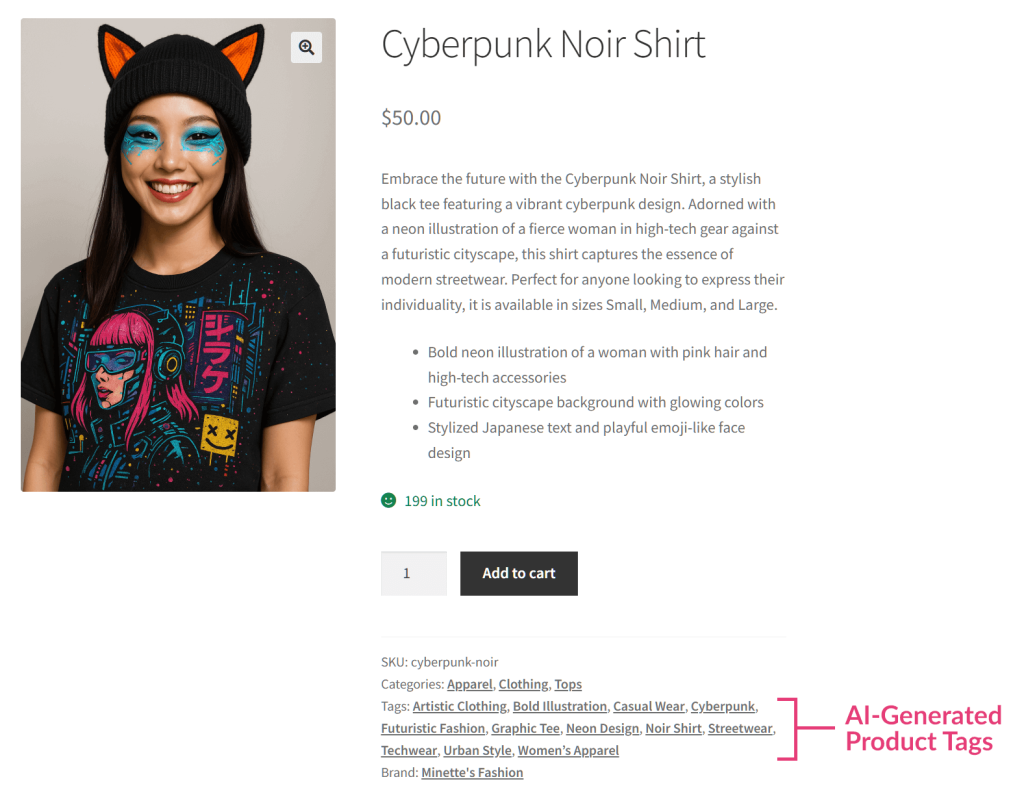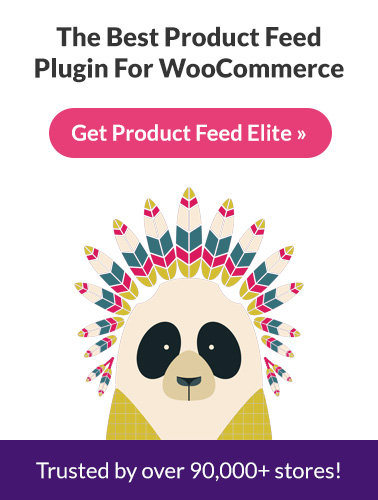
WooCommerce tags are important because they help customers find the products they want and other similar items. And with an AI-powered product tag generator, you can find the best tags faster, helping more people find your offering and making it easier to get more sales.
In this article, we’ll look at what WooCommerce product tags are and how they work with product feeds to help more customers find your products. We’ll also introduce you to a powerful WooCommerce AI tool that automates the creation of the ideal tags for your items.
- I. How WooCommerce Tags Help Store Owners
- II. How WooCommerce Tags And Product Feeds Work Together
- III. How StoreAgent’s WooCommerce Product Tag Generator Can Help
- Conclusion
I. How WooCommerce Tags Help Store Owners
A WooCommerce product tag is a descriptive keyword, attribute, or label added to a product to describe its features, category, or qualities.
Thus, a product tag can include color, size, brand, material, season, style, or common search terms like “kitchen tools” or “back-to-school supplies.”
Below are some product examples along with the tags you could use for each:
- Ceramic Coffee Mug: ceramic mug, coffee cup, dishwasher safe, morning routine, drinkware
- Camping Tent (4-Person): camping tent, outdoor gear, 4-person, waterproof, easy setup
- Wireless Gaming Mouse: gaming mouse, wireless, RGB lighting, high DPI, PC accessory
- Diamond Rocking Unicorn: diamond rocking unicorn, unicorn toy, rocking horse, toddler gift, fantasy ride-on
- Naughty Leather Whip: leather whip, costume accessory, roleplay, durable, handle grip
- Blue the Husky Action Figure: Blue the Husky, action figure, collectible, poseable, toy with cannons
How do WooCommerce product tags help store owners?
So, how do WooCommerce tags help customers? Let’s find out!
1. They help customers find products
Tags are simple words that describe a product, like its color, style, or use. When a customer searches or filters results, the store uses these tags to display the most relevant items.
For instance, a golf putter with tags like “carbon fiber,” “left-handed,” and “performance” will appear in search results when someone searches for those keywords.
2. They show related items
Tags are often clickable in online stores. Clicking a tag leads to other products that share the same tag.
For example, if you’re browsing a wireless gaming mouse tagged with “wireless” or “gaming mouse,” clicking those tags will show you more gaming mice or related items, saving time compared to starting a new search.
3. They can improve search engine visibility
Tag pages can show up on search engines like Google, helping more people find your store.
For instance, someone searching for “cute fox plush” might land on your tag page if it’s one of your tags. This attracts more traffic to your store, even if visitors don’t start on your main page.
4. They help organize products
Some stores use tags behind the scenes to organize items into categories. For example, you may see a section like “gifts under $50” on the homepage.
Tags link products based on themes or prices, making it easier to group them without manually sorting everything.
5. They help you track performance
Tags aren’t just for shoppers; they’re useful for store owners too. You can see which tags get the most clicks or lead to sales. This gives you insight into what styles, features, or products your customers are most interested in.
II. How WooCommerce Tags And Product Feeds Work Together
A product feed is a file that lists all the details about the products in your store, like names, prices, and images. It helps show your products in online marketplaces, price comparison sites, social media, and other sales channels. This helps increase your reach and visibility, which can lead to more sales opportunities.
Here’s the thing: WooCommerce product tags and product feeds work very well together.
Basically, product feeds allow you to display your offerings across different channels, while tags help shoppers find them more easily within those channels.
Let’s say you’re selling fishbowls. By using product feeds, you can showcase these items on platforms like Google Shopping and Bing Shopping. Then, by using tags like “decorative,” “glass,” and “aquarium,” you make it easier for shoppers to find your fishbowls when they use those keywords in their product searches.
Store owners we’ve worked with have seen better results by optimizing both WooCommerce product tags and product feeds. With well-chosen WooCommerce tags, a product feed helps reach the right audience across multiple platforms, increasing the chances of a sale. It’s not just about being visible; it’s about being visible to the right people.
Would you like to know more about product feeds? Then check out the following extensive guide:
What Is A Product Feed And How Do You Create One? (Ultimate Guide)
III. How StoreAgent’s WooCommerce Product Tag Generator Can Help
StoreAgent is a set of AI tools made to help people who run WooCommerce stores.
Each tool is built to handle a different ecommerce job fast and correctly. For example, StoreAgent includes tools that can automatically:
- Craft long product descriptions
- Generate concise product summaries
- Summarize customer reviews
- Answer customer inquiries
One of the tools in StoreAgent is called the Product Tag Generator.
What is StoreAgent’s Product Tag Generator?
StoreAgent’s Product Tag Generator is an AI-powered tool that automatically creates WooCommerce tags for your products. Thus, instead of tagging each product manually, which takes a lot of time, you can have Product Tag Generator do the heavy lifting for you.
Basically, this WooCommerce AI tool looks at your product’s details, such as its various features and attributes like size, color, or material. Then, it suggests the best keywords based on this information.
For one thing, the Product Tag Generator saves you time and effort. For another, it removes guesswork and ensures the right tags are always used. This helps keep your store organized and makes it easier for customers to find what they want, which can boost product reach, visibility, and sales!
How to use StoreAgent’s Product Tag Generator
In this guide, we’ll show you how easy it is to use StoreAgent’s Product Tag Generator.
Just follow these simple steps:
Step 1: Open StoreAgent
Go to your WordPress dashboard. Then click on StoreAgent AI > AI Agents. This will take you to the page where you can see all of StoreAgent’s AI tools.
Step 2: Turn on the Product Tag Generator AI
Switch on the Product Tag Generator AI by clicking its toggle button. When it says “Active,” it’s ready to go.
Before you start, it’s smart to check the settings. Click on Settings, then go to the Settings tab to open the Product Tag Generator’s setup page.
In the settings section, you can choose how many tags the AI should create—up to 10 by default.
You can also include product categories or attributes as tags.
When you’re done, click Save Changes.
If you want to learn more about how this tool works, check out the Agent Information tab.
Step 4: Let the AI create tags for you
Now it’s time to generate tags!
Go to Products > All Products, then pick the product you want to tag. For this example, we’ll use a t-shirt called “Cyberpunk Noir.”
On the product’s Edit Product page, find the Product tags box. It’s usually on the right side.
Because the Product Tag Generator is turned on, you’ll see a Generate with AI button. Click it, and the AI will automatically create tags based on your product.
The AI only needs a few seconds to generate your tags.
Additionally, you can click the button again to add more tags, delete any you don’t want, or even type in your own.
When you’re happy with the tags, click the Update button in the Publish box to save everything.
The result…
The image below shows how the AI-generated WooCommerce tags appear on your live product page, just like your customers will see them.
Great job! With StoreAgent, you’re ready to create WooCommerce product tags that help more people find your items and explore everything your store offers.
Use product feeds and AI together, and your tags will be optimized to reach a wider audience, making it even easier for customers to find exactly what they’re looking for!
Conclusion
WooCommerce tags help customers find products faster while improving your store’s visibility and organization.
When paired with product feeds, tags boost your reach across sales channels. And with AI tools like StoreAgent’s Product Tag Generator, you can automate tagging, save time, and make products easier to discover, driving more sales and growth.
To summarize, this article explored the following concepts:
- How WooCommerce tags help store owners
- WooCommerce tags and product feeds: how they work together
- How StoreAgent’s WooCommerce Product Tag Generator can help
Do you have any questions about WooCommerce tags? Let us know in the comments!
